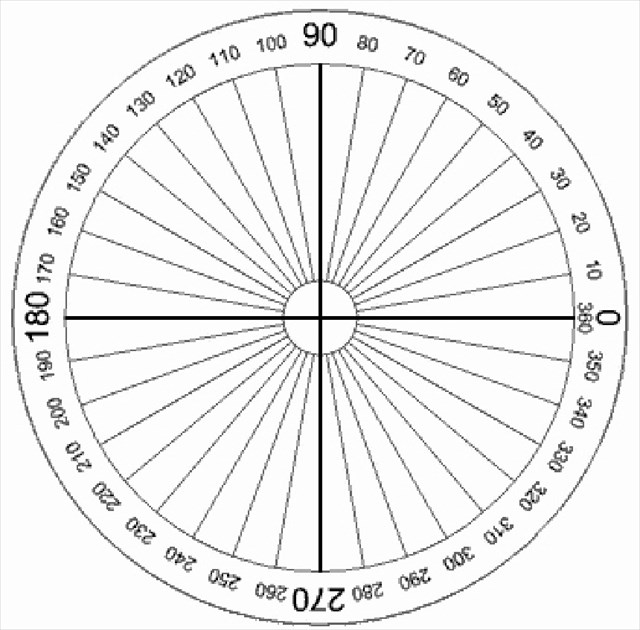I've found equations http://www.physicsclassroom.com/Class/1DKin/U1L6a.cfm for solving everything (and rearranged to solve everything) to do with projectile motion EXCEPT this, even though it should be possible.
- Gravity = 10 m/s^2 (for simplicity)
- Launch Angle = any angle in 0-360 degrees
- Launch Position in x,y coordinates = any position, could be a different elevation than landing position
- Landing position in x,y coordinates = any position other than Launch position, could be a different elevation than launch position
What is the general equation to solve for initial velocity for all angles 0-360 to hit a target at x2,y2 when launching from x1,y1?
Note: depending on the direction you are launching the projectile, some angles will not be possible, but keep in mind that if you were at a very high altitude and were launching a projectile at a target beneath you, launch angles other than 0-180 will be viable.
Just to be clear, this is the orientation of the 360 degree wheel I'm talking about, which has 90 degrees at the top and 270 at the bottom: 
Answer
Here is what I've found to work so far:
$$\text{initial velocity} = \frac{\sqrt{\text{Gravity}}\sqrt{x_2-x_1}\sqrt{(\tan{(\text{LaunchAngle})})^2+1})}{\sqrt{2\tan{(\text{LaunchAngle})} - \dfrac{2\text{Gravity}(y_2-y_1)}{x_2-x_1}}}$$
However, while it appears to work great for high launch angles, the lower the angle the less accurate it seems to become (using pixels on the screen as a reference), can anyone find out what flaw it has?
UPDATE I was wrong earlier, it works fine at all angles as long as the Y positions of launch and landing position are the same, the equation somehow fails to take into account "uneven" ground, and I'm stumped by this!
No comments:
Post a Comment